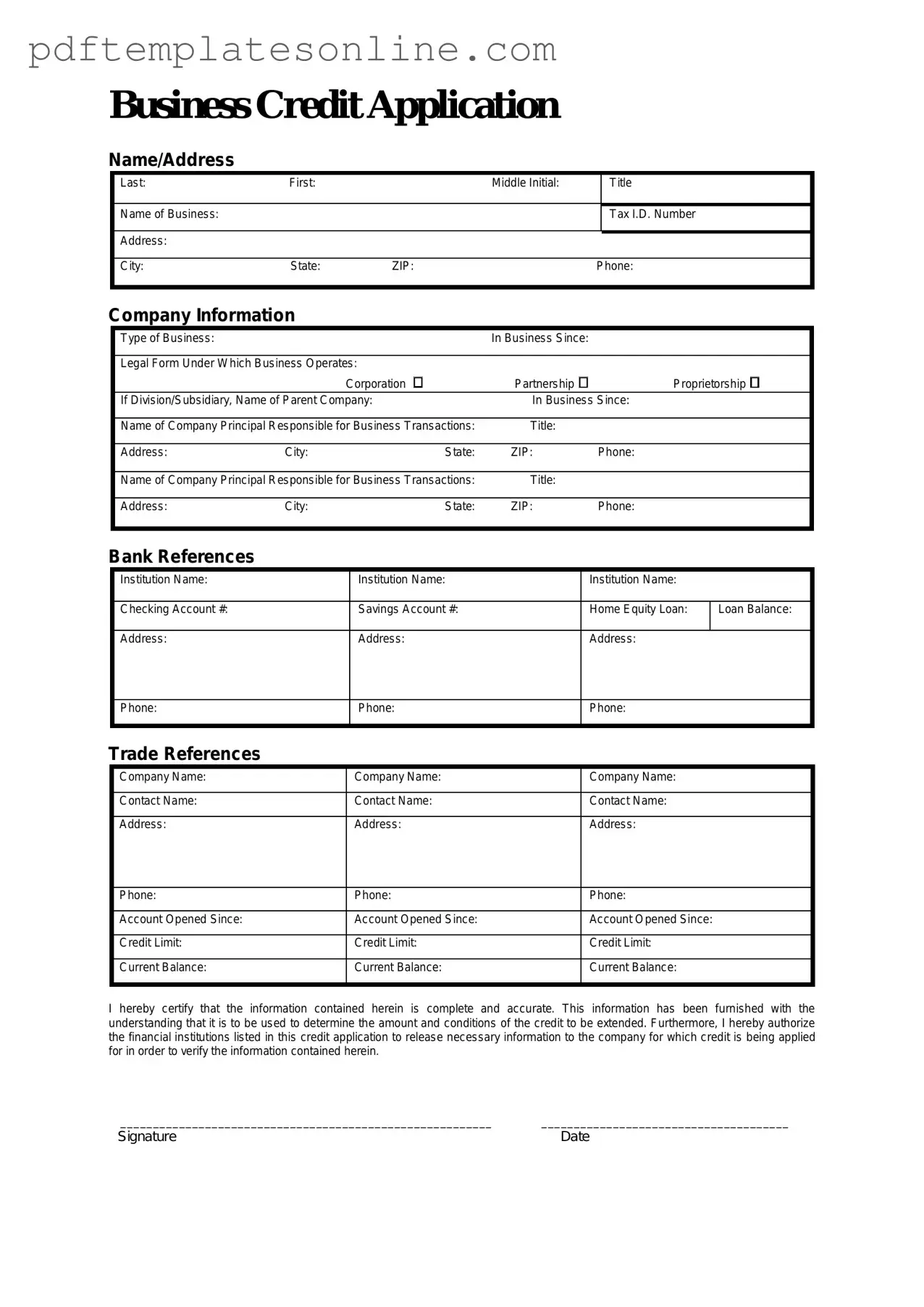Filling out a Business Credit Application form can be a straightforward process, but many people make common mistakes that can hinder their chances of approval. One frequent error is providing inaccurate information. This can include misspellings in the business name or incorrect addresses. Always double-check your entries to ensure they match official documents.
Another mistake is failing to disclose all relevant business information. Applicants sometimes omit details about ownership structure or financial history. Lenders need a complete picture of your business to make informed decisions. Transparency is key.
Some individuals neglect to include personal guarantees. If the business is new or lacks a strong credit history, lenders may require a personal guarantee from the owner. Omitting this can lead to automatic denial.
Inaccurate financial statements are also a common issue. Many applicants either exaggerate their financial health or fail to provide the necessary documentation. It's crucial to present honest and clear financial records to build trust with lenders.
Another error involves not understanding the credit terms. Applicants often overlook the fine print, which can lead to misunderstandings about interest rates and repayment schedules. Take the time to read and comprehend all terms before submission.
Some applicants forget to sign the application. A missing signature can result in delays or outright rejection. Always ensure that every required field is completed, including your signature.
Failure to provide references can also be detrimental. Many lenders request business and personal references to assess creditworthiness. Not providing these can signal a lack of preparedness or professionalism.
Additionally, applicants may submit the application without a business plan. A solid business plan can demonstrate your strategy and financial projections. It shows lenders that you have thought through your business's future.
Lastly, not following up after submission can be a missed opportunity. After submitting your application, checking in can help clarify any questions the lender may have. This proactive approach can positively influence their decision.
